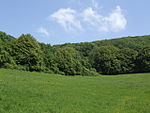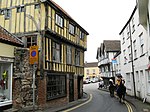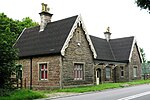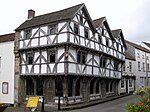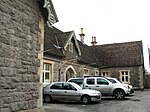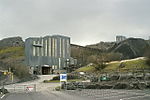Cheddar Reservoir
Cheddar, SomersetDrinking water reservoirs in EnglandReservoirs in SomersetSites of Special Scientific Interest in SomersetSites of Special Scientific Interest notified in 1972 ... and 1 more
Wetland Sites of Special Scientific Interest

Cheddar Reservoir is an artificial reservoir in Somerset, England, operated by Bristol Water. Dating from the 1930s it has a capacity of 1350 million gallons (6,140,000 cubic metres). The reservoir is supplied with water taken from the Cheddar Yeo river in Cheddar Gorge. The inlet grate for the 54 inches (1.4 m) water pipe that is used to transport the water can be seen immediately upstream from the sensory garden in Cheddar Gorge. It lies to the west of the village of Cheddar and south east of the town of Axbridge. Because of this it is sometimes known as Axbridge Reservoir. It is roughly circular in shape, and surrounded by large earth banks which are grazed by sheep.
Excerpt from the Wikipedia article Cheddar Reservoir (License: CC BY-SA 3.0, Authors, Images).Cheddar Reservoir
Black Lane, Sedgemoor
Geographical coordinates (GPS) Address Website Nearby Places Show on map
Geographical coordinates (GPS)
| Latitude | Longitude |
|---|---|
| N 51.2806 ° | E -2.8014 ° |
Address
Bristol Corinthian Yacht Club
Black Lane
BS26 2DP Sedgemoor
England, United Kingdom
Open on Google Maps
